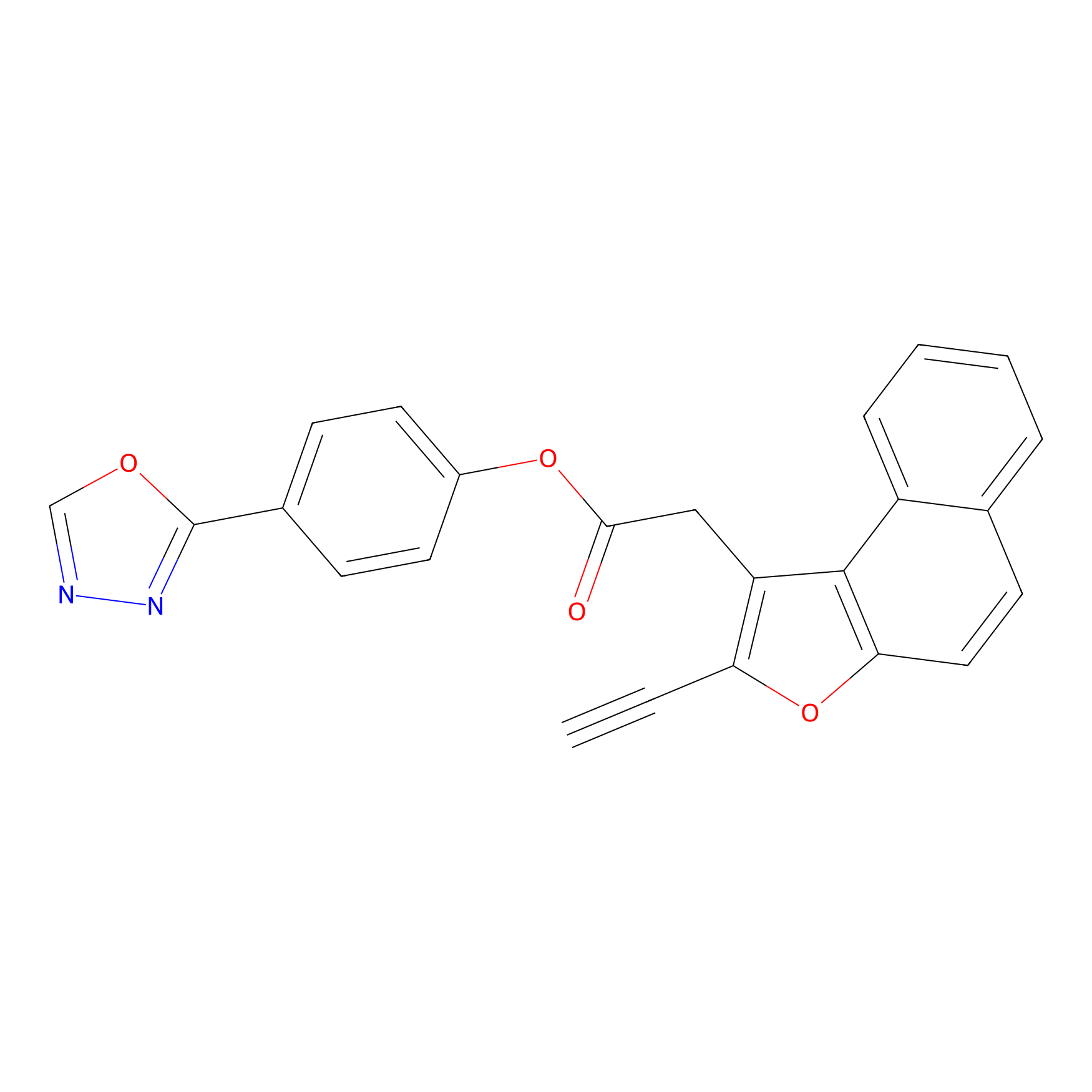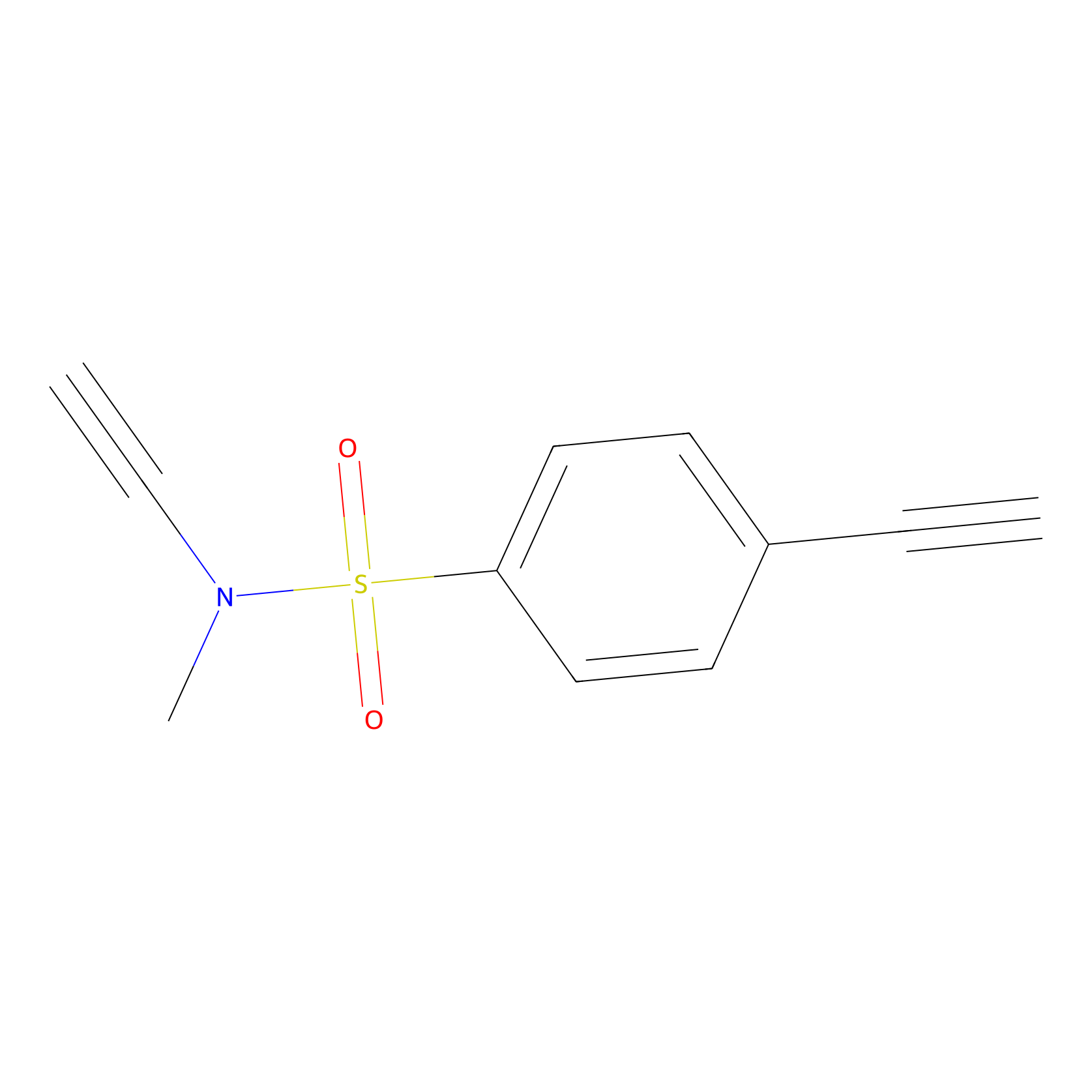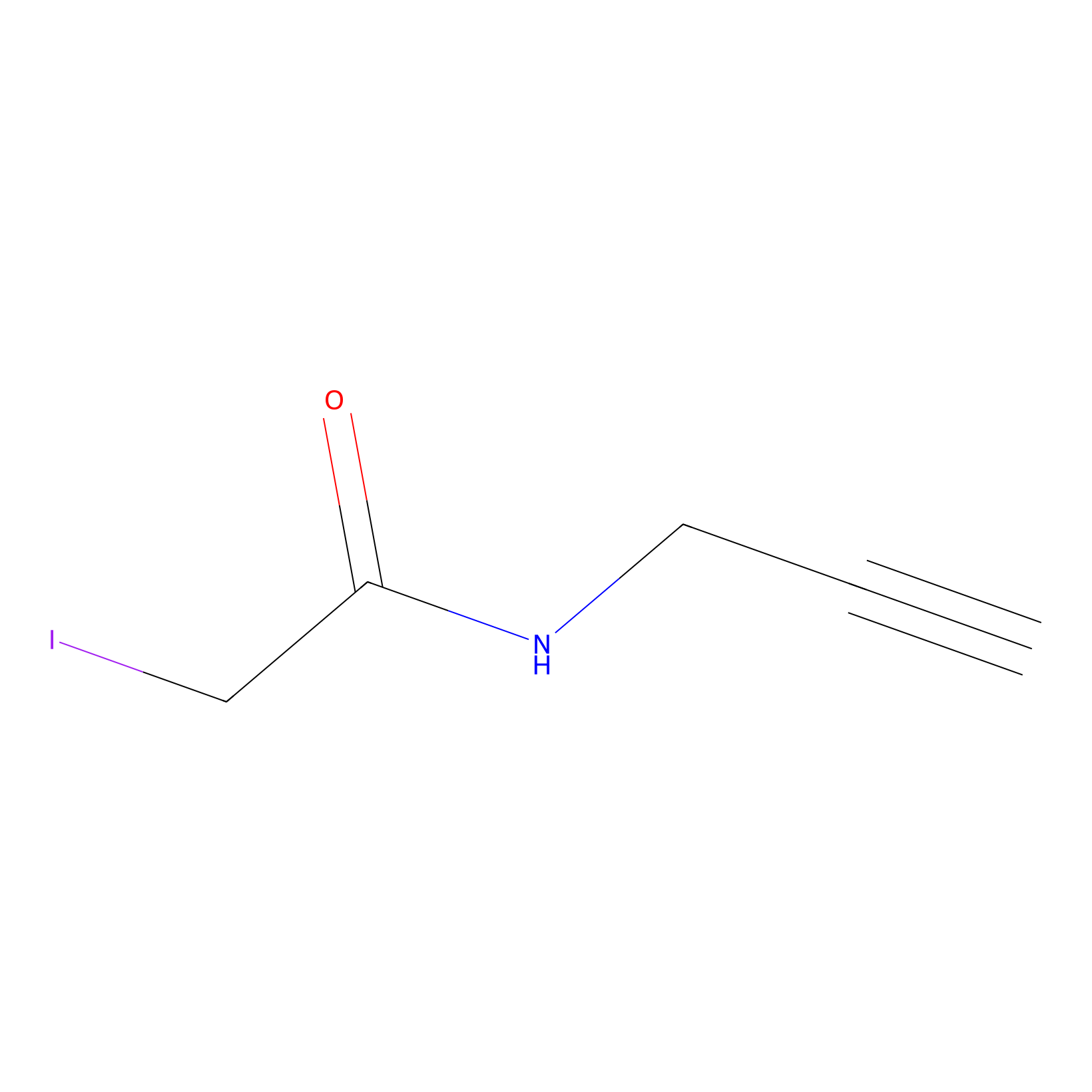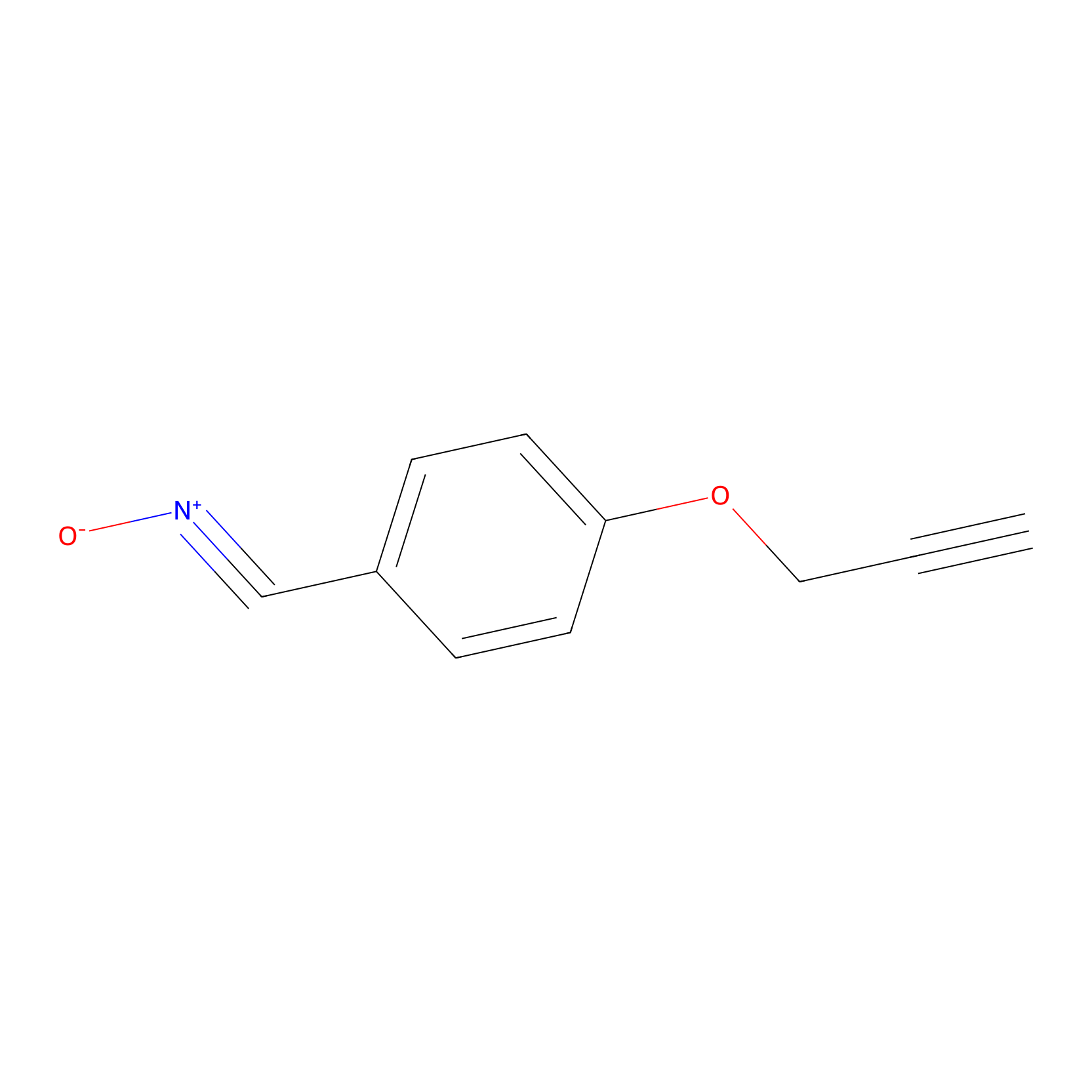Details of the Target
General Information of Target
Probe(s) Labeling This Target
ABPP Probe
| Probe name | Structure | Binding Site(Ratio) | Interaction ID | Ref | |
|---|---|---|---|---|---|
|
TG42 Probe Info |
 |
51.95 | LDD0326 | [1] | |
|
YN-1 Probe Info |
 |
100.00 | LDD0444 | [2] | |
|
IPM Probe Info |
 |
C53(0.00); C91(0.00); C287(0.00); C188(0.00) | LDD0241 | [3] | |
|
DBIA Probe Info |
 |
C53(3.38) | LDD3418 | [4] | |
|
W1 Probe Info |
 |
N.A. | LDD0236 | [3] | |
Competitor(s) Related to This Target
| Competitor ID | Name | Cell line | Binding Site(Ratio) | Interaction ID | Ref |
|---|---|---|---|---|---|
| LDCM0367 | CL1 | PaTu 8988t | C91(1.08) | LDD1246 | [5] |
| LDCM0368 | CL10 | PaTu 8988t | C91(1.59) | LDD1247 | [5] |
| LDCM0379 | CL11 | PaTu 8988t | C91(1.29) | LDD1258 | [5] |
| LDCM0390 | CL12 | PaTu 8988t | C91(1.14) | LDD1269 | [5] |
| LDCM0400 | CL13 | PaTu 8988t | C91(1.49) | LDD1279 | [5] |
| LDCM0401 | CL14 | PaTu 8988t | C91(1.54) | LDD1280 | [5] |
| LDCM0402 | CL15 | PaTu 8988t | C91(1.27) | LDD1281 | [5] |
| LDCM0407 | CL2 | PaTu 8988t | C91(2.75) | LDD1286 | [5] |
| LDCM0418 | CL3 | PaTu 8988t | C91(1.07) | LDD1297 | [5] |
| LDCM0420 | CL31 | PaTu 8988t | C91(1.65) | LDD1299 | [5] |
| LDCM0421 | CL32 | PaTu 8988t | C91(1.46) | LDD1300 | [5] |
| LDCM0422 | CL33 | PaTu 8988t | C91(1.02) | LDD1301 | [5] |
| LDCM0423 | CL34 | PaTu 8988t | C91(1.59) | LDD1302 | [5] |
| LDCM0424 | CL35 | PaTu 8988t | C91(1.69) | LDD1303 | [5] |
| LDCM0425 | CL36 | PaTu 8988t | C91(0.78) | LDD1304 | [5] |
| LDCM0426 | CL37 | PaTu 8988t | C91(1.47) | LDD1305 | [5] |
| LDCM0428 | CL39 | PaTu 8988t | C91(1.55) | LDD1307 | [5] |
| LDCM0429 | CL4 | PaTu 8988t | C91(2.95) | LDD1308 | [5] |
| LDCM0430 | CL40 | PaTu 8988t | C91(1.53) | LDD1309 | [5] |
| LDCM0431 | CL41 | PaTu 8988t | C91(1.67) | LDD1310 | [5] |
| LDCM0432 | CL42 | PaTu 8988t | C91(1.77) | LDD1311 | [5] |
| LDCM0433 | CL43 | PaTu 8988t | C91(1.89) | LDD1312 | [5] |
| LDCM0434 | CL44 | PaTu 8988t | C91(1.34) | LDD1313 | [5] |
| LDCM0435 | CL45 | PaTu 8988t | C91(1.85) | LDD1314 | [5] |
| LDCM0436 | CL46 | PaTu 8988t | C91(1.08) | LDD1315 | [5] |
| LDCM0437 | CL47 | PaTu 8988t | C91(0.91) | LDD1316 | [5] |
| LDCM0438 | CL48 | PaTu 8988t | C91(0.86) | LDD1317 | [5] |
| LDCM0439 | CL49 | PaTu 8988t | C91(1.12) | LDD1318 | [5] |
| LDCM0440 | CL5 | PaTu 8988t | C91(2.39) | LDD1319 | [5] |
| LDCM0441 | CL50 | PaTu 8988t | C91(1.10) | LDD1320 | [5] |
| LDCM0442 | CL51 | PaTu 8988t | C91(1.13) | LDD1321 | [5] |
| LDCM0443 | CL52 | PaTu 8988t | C91(1.69) | LDD1322 | [5] |
| LDCM0444 | CL53 | PaTu 8988t | C91(3.41) | LDD1323 | [5] |
| LDCM0445 | CL54 | PaTu 8988t | C91(3.10) | LDD1324 | [5] |
| LDCM0446 | CL55 | PaTu 8988t | C91(1.67) | LDD1325 | [5] |
| LDCM0447 | CL56 | PaTu 8988t | C91(1.31) | LDD1326 | [5] |
| LDCM0448 | CL57 | PaTu 8988t | C91(1.72) | LDD1327 | [5] |
| LDCM0449 | CL58 | PaTu 8988t | C91(1.50) | LDD1328 | [5] |
| LDCM0450 | CL59 | PaTu 8988t | C91(1.13) | LDD1329 | [5] |
| LDCM0451 | CL6 | PaTu 8988t | C91(0.84) | LDD1330 | [5] |
| LDCM0452 | CL60 | PaTu 8988t | C91(1.15) | LDD1331 | [5] |
| LDCM0453 | CL61 | PaTu 8988t | C91(0.63) | LDD1332 | [5] |
| LDCM0454 | CL62 | PaTu 8988t | C91(0.23) | LDD1333 | [5] |
| LDCM0455 | CL63 | PaTu 8988t | C91(0.38) | LDD1334 | [5] |
| LDCM0456 | CL64 | PaTu 8988t | C91(0.37) | LDD1335 | [5] |
| LDCM0457 | CL65 | PaTu 8988t | C91(0.41) | LDD1336 | [5] |
| LDCM0458 | CL66 | PaTu 8988t | C91(0.48) | LDD1337 | [5] |
| LDCM0459 | CL67 | PaTu 8988t | C91(0.43) | LDD1338 | [5] |
| LDCM0460 | CL68 | PaTu 8988t | C91(0.45) | LDD1339 | [5] |
| LDCM0461 | CL69 | PaTu 8988t | C91(0.52) | LDD1340 | [5] |
| LDCM0462 | CL7 | PaTu 8988t | C91(1.48) | LDD1341 | [5] |
| LDCM0463 | CL70 | PaTu 8988t | C91(0.47) | LDD1342 | [5] |
| LDCM0464 | CL71 | PaTu 8988t | C91(0.28) | LDD1343 | [5] |
| LDCM0465 | CL72 | PaTu 8988t | C91(0.62) | LDD1344 | [5] |
| LDCM0466 | CL73 | PaTu 8988t | C91(0.53) | LDD1345 | [5] |
| LDCM0467 | CL74 | PaTu 8988t | C91(0.32) | LDD1346 | [5] |
| LDCM0473 | CL8 | PaTu 8988t | C91(1.78) | LDD1352 | [5] |
| LDCM0484 | CL9 | PaTu 8988t | C91(1.52) | LDD1363 | [5] |
| LDCM0468 | Fragment33 | PaTu 8988t | C91(0.56) | LDD1347 | [5] |
| LDCM0427 | Fragment51 | PaTu 8988t | C91(1.67) | LDD1306 | [5] |
| LDCM0022 | KB02 | Hep 3B2.1-7 | C188(1.69); C53(3.26) | LDD2353 | [4] |
| LDCM0023 | KB03 | Hep 3B2.1-7 | C188(2.10); C53(2.33) | LDD2770 | [4] |
| LDCM0024 | KB05 | SG231 | C53(3.38) | LDD3418 | [4] |
The Interaction Atlas With This Target
References
